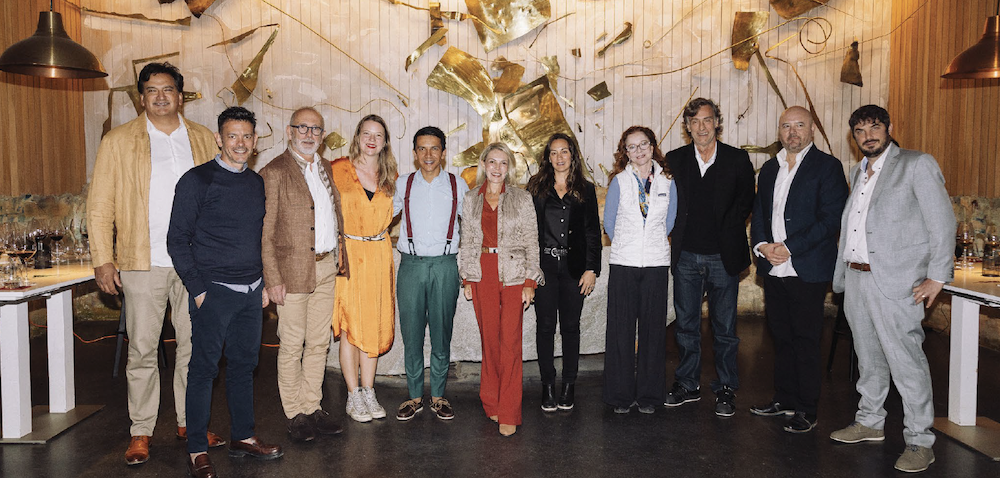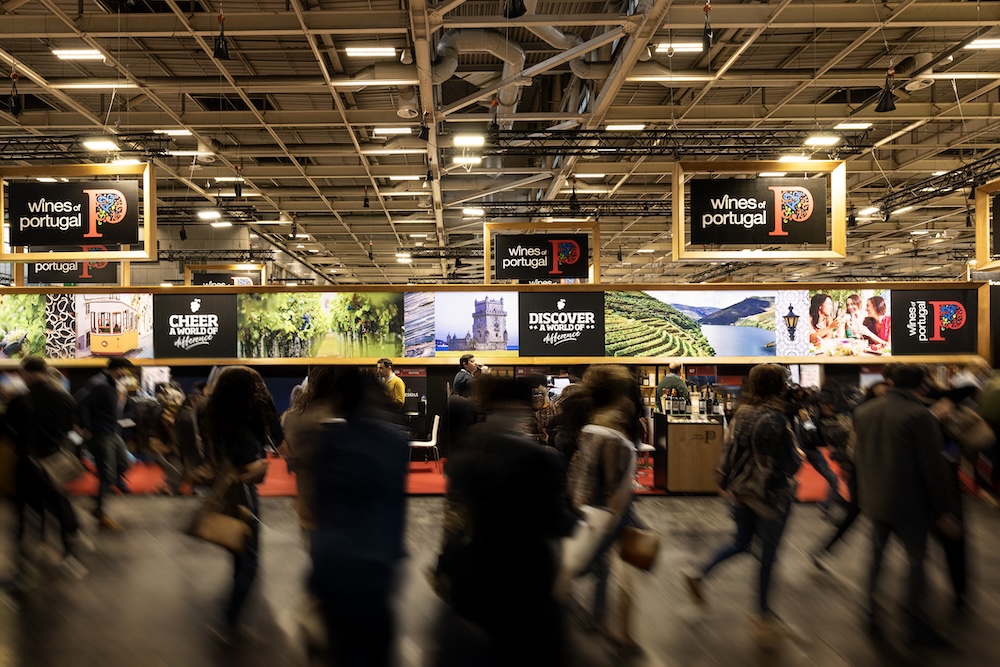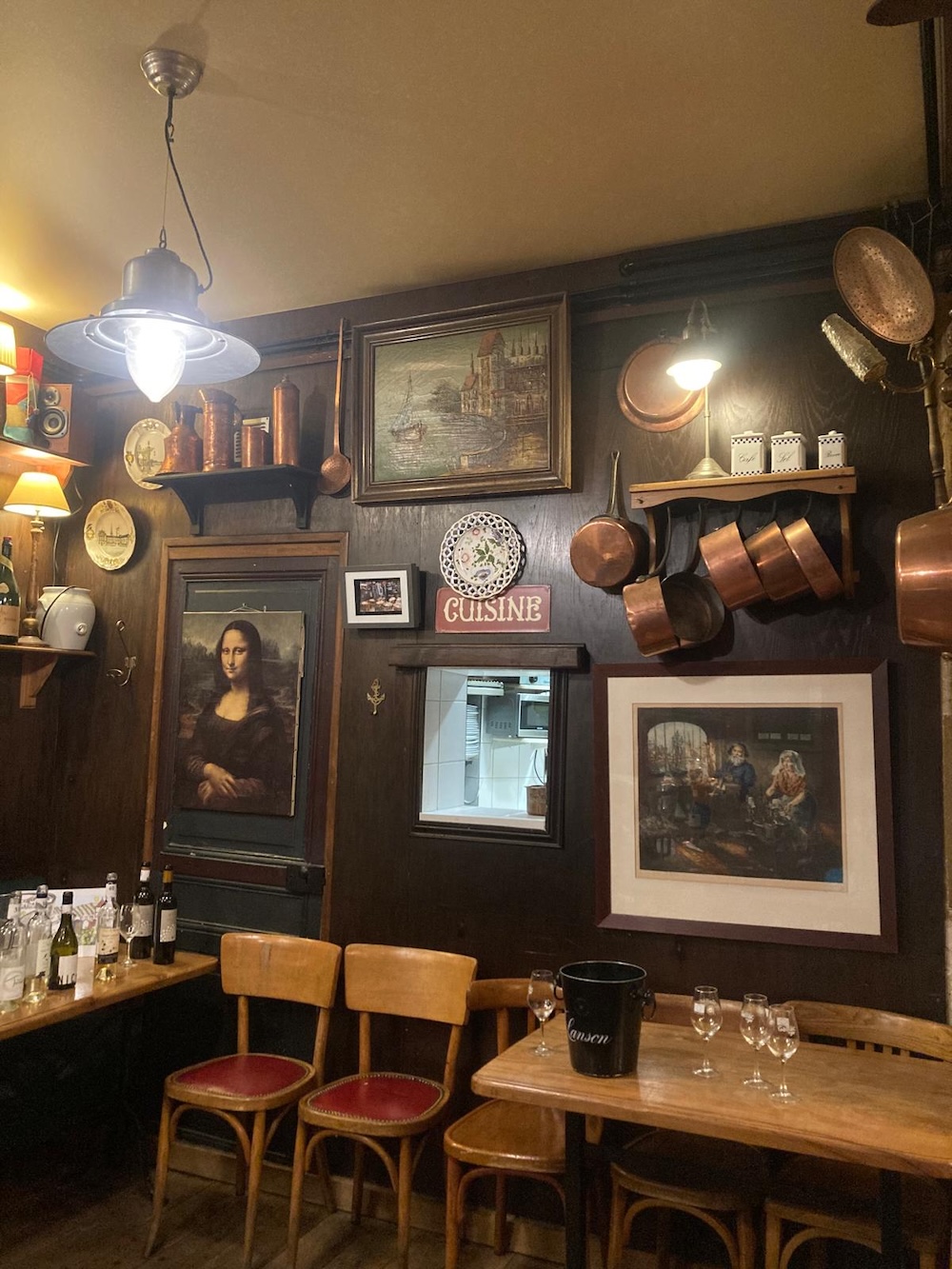
Discovery

Discovery
By Ágnes Németh, posted on 26 August 2024
A small country with great pride, Hungary is home to 22 wine regions and more than 200 grape varieties. While domestic consumption has significantly dropped over the past two decades, producers are optimistic and seeking out new markets. Seasoned wine connoisseurs will undoubtedly find exciting wines by Hungarian winemakers, whether they are looking for indigenous rarities or outstanding examples of international varieties.
There is a saying about the way Hungarian people celebrate: we like crying even when we feast. Gloomy Sunday is one of the most well-known Hungarian songs, though it has a rather bad reputation: when it hit the radio stations of the world in 1933, there were rumours that several people committed suicide when listening to the song. Though these rumours have never been proven, the ‘crying while feasting’ mentality is true, and looking at the statistics, we have reasons to despair.
In the latest OIV annual report, Hungary is listed among the major wine producing countries of the world – though in the very last position (25th), with vineyards shrinking in size. In 2018 there were 69,000 hectares under vine, but by 2023 the figure had dropped to just 61,000. In terms of per capita consumption, Hungary no longer features in prime position: 20 years ago Hungarians consumed around 30 litres / year, but this amount has decreased dramatically – in 2023 it stood at no more than 17.5 litres. A recent comparative study was carried out by Professor Gergely Szolnoky (University of Geisenheim) to find the causes of this sizeable decrease, and according to his research the most significant reason is the loss of tradition of drinking wine in families. While in the past several families would have a tiny vineyard and making wine at home was a common hobby – just like growing vegetables in a kitchen garden – nowadays both customs have disappeared. Grapevine trellises and vegetable plots have been replaced by manicured lawns, and with the loss of gardens, everyday wine has also disappeared from family tables. Present-day wine consumption is more and more the privilege of the well-heeled, though the segment is showing a promising increase.

Harslevelu grapes in the Tokaj Region
Hungarian wine exports show a slow but steady increase. Even during Covid there was some growth: the amount of wine exported in 2020 was 13% more than in the previous year, and was worth 112.7 million euros. In the aggregate (including bag-in-box and bulk wine), Slovakia is the leading importer country, but for bottled wines, the United Kingdom imports the most, followed by Slovakia’s neighbour, the Czech Republic, then Germany and Poland. These are the most important markets for Hungarian wines, accounting for 64% of total exports (with the UK alone representing 18%). The top five are followed by China, the USA, Spain, France and Austria. Poland is only 5th in the ranking and yet it has a special importance, since the two countries have many common roots – the Polish and Hungarians are said to be ‘two good friends’. In Poland, wine consumption still lags behind beer and spirits, but with wine becoming trendier, Hungary will have more market potential there. In the large UK market, several campaigns are helping to increase sales, promoting Furmint, the flagship white variety and also new ways of pairing food and Tokaji Aszú, Hungary’s noble sweet wine.
This small country covering less than 100,000 square kilometres (93,030) has a population of 9.6 million people. Hungary is smaller than Iceland, and more or less the same size as Portugal, and just like Portugal, there are probably too many wine regions – especially for the size. However, both countries group wine regions into larger regions to make the system clearer.
Contacting a representative of the official wine marketing board of Hungary is challenging, mainly because the authorities change far too often, and occasionally duties are distributed among several bodies, ministries and offices. As regards promoting the six broader regions, most of the official marketing representatives agree and this results in a better understanding of the diverse world of Hungarian wines. And undoubtedly, this diverse, colourful wine scene is worth discovering. Also, wine travellers have an easy job. Should they arrive by plane in the capital or by car across the borders, they can visit cellars and taste wines within less than an hour. Even the capital boasts its own vineyards – in Budapest wine connoisseurs can take a tram, and after a quick ride they can enjoy still and sparkling wines in Budafok. Here is a short introduction to the six broader wine regions.

Beautiful views out over lake Balaton and it's vineyards on Badacsony Hills
Even though Tokaj is one of the 22 wine regions, due to its significance, it is one of the six broader wine regions as well. Tokaj is like the footballer Puskás or the dish 'gulyás', it rings a bell when foreigners are asked about it. The sweet wines of Tokaj have been exported for centuries, and their famous moniker comes from Louis XIV, the 'Sun King', who was a devoted admirer of the rich, luscious Tokaji Aszú wines. “The wine of kings, and the king of wines” is still quoted frequently, though the 21st century has brought the dry wines of Tokaj into the limelight. Decreasing sweet wine sales around the world has led to the use of the precious terroir of Tokaj for producing outstanding single vineyard wines mainly from Furmint and Hárslevelű white grapes. As the head sommelier of a top London restaurant said, Furmint has an answer for every guest’s needs. It has the potential to produce fresh, easy-drinking young wines; precise, terroir-driven, mature single vineyard wines; bottle-aged sparkling wines; and of course late harvest and Aszú wines. Tokaj lies on the far-eastern end of a large volcanic range spanning the entire country, where the soil is rich in rhyolite, andesite tuff and loess. The climate is continental with cold winters and hot summers, plus the long, sunny and foggy autumns let botrytis spread through the vineyards – and thus the botrytised berries can be transformed into one of the miracles of the wine world, Tokaji Aszú.
The pioneer of dry wines in Tokaj is István Szepsy, a true icon. He was followed by all the quality producers and now each estate has several dry wines. Holdvölgy, Sauska, Zsirai, Balassa, Gizella are just some of the most notable wineries. Foreign investment helped raise recognition of Tokaj with estates like Oremus (owned by Vega Sicilia), Royal Tokaj (co-owned by Hugh Johnson) and Disznókő (AXA Millésime group).
Grand Tokaj is the only state-owned winery in Hungary (founded in 1948). It is the largest winery with a total of 66 hectares, accounting for 35% of the region’s total. The company also purchases grapes from over 1,200 small producers across some 1,050 hectares of land. The wines are made under the supervision of Károly Áts – winner of the ‘Winemaker of the Year’ title in 2012. Károly Áts is a world-famous winemaker, and is often dubbed ‘The 100-point-Karcsi Áts’, because he made an exceptional Tokaji Esszencia 1999 at Hugh Johnson’s Royal Tokaji winery. The result is legendary – America’s Wine & Spirits magazine awarded 100 points for the first time in its history. Then he received 100 points from Robert Parker for another Tokaji Esszencia (2007). He has been head winemaker at Grand Tokaj since 2013, and with him a new era began at the largest winery in the Tokaj wine region, with a new spirit and new impetus.

The giant Grand Tokaj bottle in the village of Szegi
The Kunság, Csongrád and Hajós–Baja wine regions are grouped in the broader Duna wine region, situated on the Great Hungarian Plain east of the river Danube. Csongrád is the lesser known of the three, mainly with small cellars, many of which do not even bottle their wines. Hajós–Baja is home to the spectacular ‘cellar village’ of Hajós, a must-visit spot with several artisan winemakers. Koch Winery is the leading estate managed by Csaba Koch, the creator of the ‘happy grape’ concept. Kunság is the largest wine region in Hungary, with mainly sandy soils, aromatic grapes like Irsai Olivér and Cserszegi Fűszeres, and the unmissable Frittmann Winery.
Gál Winery is another recommended producer led by Éva Gálné Dignisz, who was the first female winemaker to receive the prestigious Winemaker of the Year award in 2013. Though the estate is part of the Kunság wine region, it is located in its far western corner, on the island of Csepel in the river Danube, just 25 kilometres from Budapest. Éva, the family estate’s winemaker, met her husband – passionate viticulturist Csaba Gál – at university. The adorable couple welcome thirsty wine travellers with warm hospitality and hearty platters of home-made meat products and locally grown vegetables. The estate is famous for its crisp rosé wines, but its fresh white wines from aromatic grapes are also significant.

Éva Gálné Dignisz, Hungary’s first female Winemaker of the Year
The broad North-Pannon wine region includes the Mátra, Bükk and Eger wine regions. Mátra is the largest mountainous region with volcanic soil and high-elevation vineyards producing aromatic and some serious barrel-aged whites and increasingly exciting, fruit-driven red wines. Dubicz Vineyard and Winery, Dominium Winery and Centurio are some of the names to remember. Bükk is a region that is less known worldwide, and also in Hungary, but there are several ambitious winemakers here ready to break through. Zenit is an indigenous grape they consider their flagship cultivar. Among winemakers to watch are Roland Barta, Zsolt Sándor and Roland Hajdú. Eger is the most popular wine destination for domestic wine tourists. The historic town is well known for its red blend called Egri Bikavér (also known as Bull's Blood) and the white blend called Egri Csillag (Star of Eger) is also up-and-coming. Many of the estates have some tourist attractions as well, for example Gál Tibor Winery serves meals at its Fúzió restaurant, Kovács Nimród Winery offers a range of wine cellar experiences and Tóth Ferenc Winery has just opened its wine hotel near the Castle of Eger.
The large Upper Pannon wine region with a cooler climate includes Sopron, Pannonhalma, Mór, Neszmély and Etyek–Buda. Sopron, on the western border, shares the same passion for Kékfrankos / Blaufranskish as Austria. Etyek is the Budapest vineyard with more and more sparkling wines. Mór is home to the indigenous Ezerjó grape. Neszmély is the land of aromatic white wines, and Pannonhalma produces outstanding wines from Rhine Riesling – and also an increasing number of incredible red wines. Pannonhalma is one of the smallest of the 22 wine regions, and should undoubtedly be on the radar of anyone keen to discover gems before anyone else.
Babarczi Vineyard and Winery is a family property helmed by second-generation László and Zsuzsanna Babarczi. During their father's era, the focus was on bulk wine, but realising the potential of their land, the young generation have decided to concentrate on quality wines – and successfully so. Their pure, crisp, balanced white wines – Sauvignon Blanc, Irsai Olivér, Rhine Riesling – paved the way for novel reds in recent vintages, including Marianum, a multi award winning varietal Cabernet Franc. The winery offers a whole range of wine tourist attractions from cellar visits to fashion shows where designer clothes are paired with wines.

Zsuzsanna Babarczi, the manager of the family winery
The largest lake in Central Europe, Balaton is surrounded by six regions: Somló, Badacsony, Balaton Uplands, Zala, Balatonfüred–Csopak and Balatonboglár. Olaszrizling (also known as Grasevina or Welschriesling) is the most widely planted grape in Balaton, and BalatonBor (BalatonWine) is a crisp, fresh communal wine made from this variety by many wineries around the lake.
Somló is the smallest of the 22 regions with volcanic soil, distinctive character, and Juhfark vineyards, a white grape only grown here. The other most important and most volcanic region is Badacsony with its iconic mountains and the exclusive indigenous grape Kéknyelű – it is a rare variety which needs another grape planted nearby to facilitate pollination.
Sabar Wine House is an example of an important trend of Hungary where several businessmen are trying their fortune (and spending one) in winemaking. Gábor Ádám left his home in Budapest and moved to Sabar hill in the Badacsony wine region. His accountancy duties have been replaced by the everyday tasks of a winery, and with his winemaker, Bálint Földi, he has made the ‘small hill the hill of great wines’ with his stunning Olaszrizling, Kéknyelű and Rhine Riesling wines. His enthusiasm is tangible and he has hundreds of like-minded followers, who visit his blues festivals, wine trail experiences and tastings. As he says, he created ‘Sabarism’, a community sharing the same passion.

Sabar Wine House in the magical volcanic wine region of Badacsony

Gábor Ádám, the owner of Sabar Wine House with a gastro map of Balaton
The broad Pannon wine region includes Pécs, Tolna, Szekszárd and Villány. Among the six broader wine regions this is the most red-wine-focused part of Hungary. The city of Pécs boasts Cirfandli, a local grape; Tolna is a versatile region with the Tűzkő Estate owned by Tuscany’s Antinori and Mazzei families; and Szekszárd is the home of the ‘other’ Bull's Blood, the Szekszárdi Bikavér – it is also the epicentre for wines made from the thin-skinned, spicy black Kadarka grape. Villány, the southernmost wine region in Hungary has a Mediterranean climate – the only one out of the 22 – and it is the home of our most prestigious red wines. Cabernet Franc has a special importance: since the renowned wine writer Michael Broadbent visited Villány and said “Cabernet Franc has found its new home in Villány”, the region has placed special emphasis on the variety.
A. Gere Winery is one of the icon estates in Villány and a true pioneer along with Bock and Tiffán wineries. After the collapse of the Communist regime, Attila Gere and his fellow winemakers went to see the world and learn from the most highly regarded estates in Europe to start Hungarian winemaking again, almost from scratch, after the mass production of the Soviet era. A. Gere Winery grows its vineyards organically with indigenous grapes like Kékfrankos and the rare Fekete Járdovány. Its best known wines, though, are Solus (made from Merlot) and Kopar, a Bordeaux blend. This glamorous estate also boasts a wine hotel and a restaurant.
Vylyan Vineyard and Winery is the second largest estate in Villány after Teleki (Csányi Winery), and it is all about art and elegance. The estate’s first international success was a Decanter Trophy for its Pinot Noir, but now, due to global warming, Pinot Noir has been replaced by other varieties. Csóka is a rarity “resurrected from extinction”, while Kékfrankos is a grape with infinite potential according to Mónika Debreczeni, the estate’s director. Her claims certainly seem to be founded: the winery’s Kékfrankos was selected as the best Kékfrankos at the latest VinAgora international wine competition. The estate’s labels are designed by an artist, inspired by poets and novelists, who themselves were inspired by Vylyan wines. It may sound slightly complicated, but Vylyan likes things in a more sophisticated way...

The winery at the iconic A. Gere Winery in Villány

Mónika Debreczeni and Sándor Tóth, the estate director and winemaker at Vylyan

The Vylyan estate building in the village of Kisharsány in the Villány wine region

Discovery

Discovery

Discovery